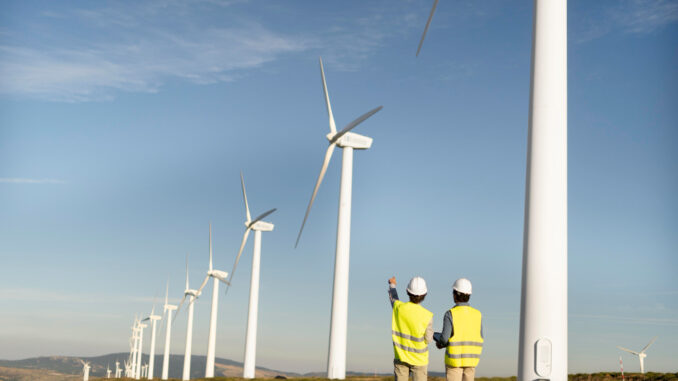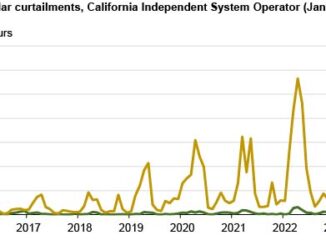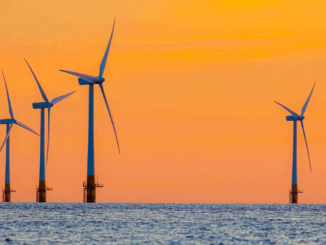
In 2020, at the height of the novel coronavirus pandemic, it seemed that renewable energy was finally getting its chance to rise to the top of the global energy sector and reset the world’s trajectory toward a genuine green energy transition. COVID-19 had provided an unprecedented interruption to the status quo and given the world a unique window of opportunity to reset the industrial rules of engagement with intentionality and future-thinking optimism. Oil prices bottomed out, it seemed that the era of peak oil was finally upon us, and renewable energy was receiving more column inches and investor attention than ever before. And for a while, that hoped-for push toward decarbonization was realized. By a number of metrics, 2021 was the best year for clean energy on record. Last year saw a record $105 billion in private investment in renewable energies, batteries, electric transport, hydrogen, and carbon capture. Sales of electric vehicles doubled from 2020 levels, and the energy industry added 37 GW of new wind and solar power capacity to the grid. The outlook was great, but even with these strides, experts warned that the growth rate for these sectors would need to continue to ramp up in order to have any hope of meeting climate goals.
This makes it all the more devastating that so far in 2022, not only has the rate of growth decelerated for renewables, the sector has taken a serious hit from ongoing supply chain issues and market volatility which has been exacerbated by the ongoing Russian war in Ukraine. Even before this year, however, the wind sector, in particular, was already showing signs of trouble. Instead of soaring to new heights in 2021, new wind power installations actually decreased last year as compared to 2022. The United States and China, the two countries responsible for the bulk of new wind power capacity, both saw decreases last year. In China, this may be due to the end of the country’s feed-in-tariff, while in the U.S. supply chains and pandemic complications have been cited as the root issue.
Indeed, this week the annual wind energy conference WindEurope is taking place in Bilbao, Spain, and the tone has been more worried than celebratory. “The state of the supply chain is ultimately unhealthy right now,” Sheri Hickok, GE Renewable Energy chief executive for onshore wind, told a conference panel. “It is unhealthy because we have an inflationary market that is beyond what anybody anticipated even last year. Steel is going up three times.”
Related: Oil Prices Rebound Despite Biden’s Best Efforts
According to reporting from Recharge, Nordex chief executive José Luis Blanco said that even before the Russian invasion of Ukraine, “the economics in the wind industry had been destroyed due to price pressures from competitive tenders coupled with a low visibility of wind capacity pipelines due to failed government policies.” Blanco says that turbine-makers have been forced to sell their product at a loss as part of a “self-destructive loop.”
If these conditions continue, it will be impossible for Europe to reach its goal of tripling wind power capacity by 2030. What’s more, a new report from the Global Wind Energy Council says that the wind will need to pick up dramatically worldwide in order for the global community to meet the goals set by the Paris climate accord in order to avoid the worst impacts of climate change. “At current rates of installation,” read the report published Monday, “GWEC Market Intelligence forecasts that by 2030 we will have less than two-thirds of the wind energy capacity required for a 1.5°C and net-zero pathway, effectively condemning us to miss our climate goals.”
The conflict in Ukraine is driving European nations to double down on their clean energy pledges as the European Union looks to shore up its own energy security and independence while weaning itself off of Russian oil, gas, and coal. In spite of these medium-term goals, however, the continent has doubled down on fossil fuels in the immediate term as the global energy supply crunch has left Europe with few options and little leverage. As the Wall Street Journal reported this week, “Ukraine War Drives Countries to Embrace Renewable Energy—but Not Yet.” Things will be looking up for the wind industry – and the climate – soon enough, but the squeeze will likely get worse before it starts to get better.
By Haley Zaremba for Oilprice.com



